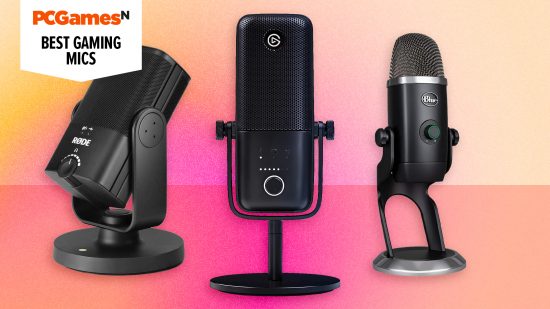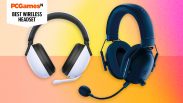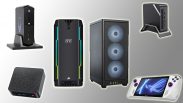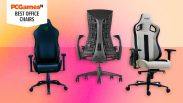Are you looking for better vocal clarity from the best gaming microphone? Whether you’re streaming, recording a podcast, or want everyone to comment on your velvety voice when playing the best multiplayer games, it’s always a good time to upgrade your gaming mic and cut out background noise.
Even the best gaming headset, the Razer BlackShark V2, which boasts a particularly clean mic for an all-in-one solution, can’t keep up with a dedicated microphone. After all, these products are designed to capture your voice as close to how it sounds in real life. Better yet, the best gaming mics are becoming more affordable and accessible, with many falling below $100 (£100).
XLR microphones are still the go-to if you don’t want to compromise on sound quality, however, the popularity and prevalence of plug-and-play USB microphones mean you no longer need to be an audio engineer to use them as they cut out the need for separate interfaces entirely. We have a selection of both types in our list of best gaming mics and a buyer’s guide to help you through what you’ll need to get started.
Here are the best gaming microphones in 2023:
- Elgato Wave:3 – best gaming mic overall
- Blue Yeti X – best for streaming
- Razer Seiren Mini – best compact mic
- Audio-Technica AT2020 – best budget XLR mic
- Rode XDM-100 – best premium pick
- Rode NT-USB Mini – best entry-level mic
- HyperX QuadCast S – best RGB microphone
- Antlion Modmic Wireless – best wireless mic
- Razer Seiren V2 Pro – best gaming mic
- GoXLR Mini – best XLR interface

1. Elgato Wave:3
The best all-round gaming microphone.
Elgato Wave:3 specs:
| Sample Rate | 48 / 96kHz |
| Bit rate | 24-bit |
| Frequency response | 70Hz – 20kHz |
| Polar patterns | Cardioid |
| Connectivity | USB-C |
Pros
- Clean, transparent output
- Integrated stand and pop shield
- Great software
Cons
- Wave Link software can be finicky
- Awkward mute button placement
- Expensive
You can stream without a webcam, but broadcasting without a microphone removes the interactive element with your viewers, making audio quality all the more important. The Elgato Wave:3 comes with a whole host of features to make sure both you and your audience get the best experience possible.
It has an understated design that’s smaller than most smartphones, meaning it won’t steal the show or obscure your webcam. It’s also highly functional, using a single dial to adjust the input gain, headphone monitoring volume, and even the microphone and PC mix to strike the right balance between the two. The red mute LED around the dial is also invaluable, preventing you from talking into the void when you forget you’re muted.
Software is Elgato’s strong suit, providing you with a nine-channel digital mixer to properly tune your audio. It doesn’t have a big learning curve and is well worth the price tag with its more granular approach to your stream’s sound – provided you only need one microphone, as you can’t run multiple Wave mics simultaneously.
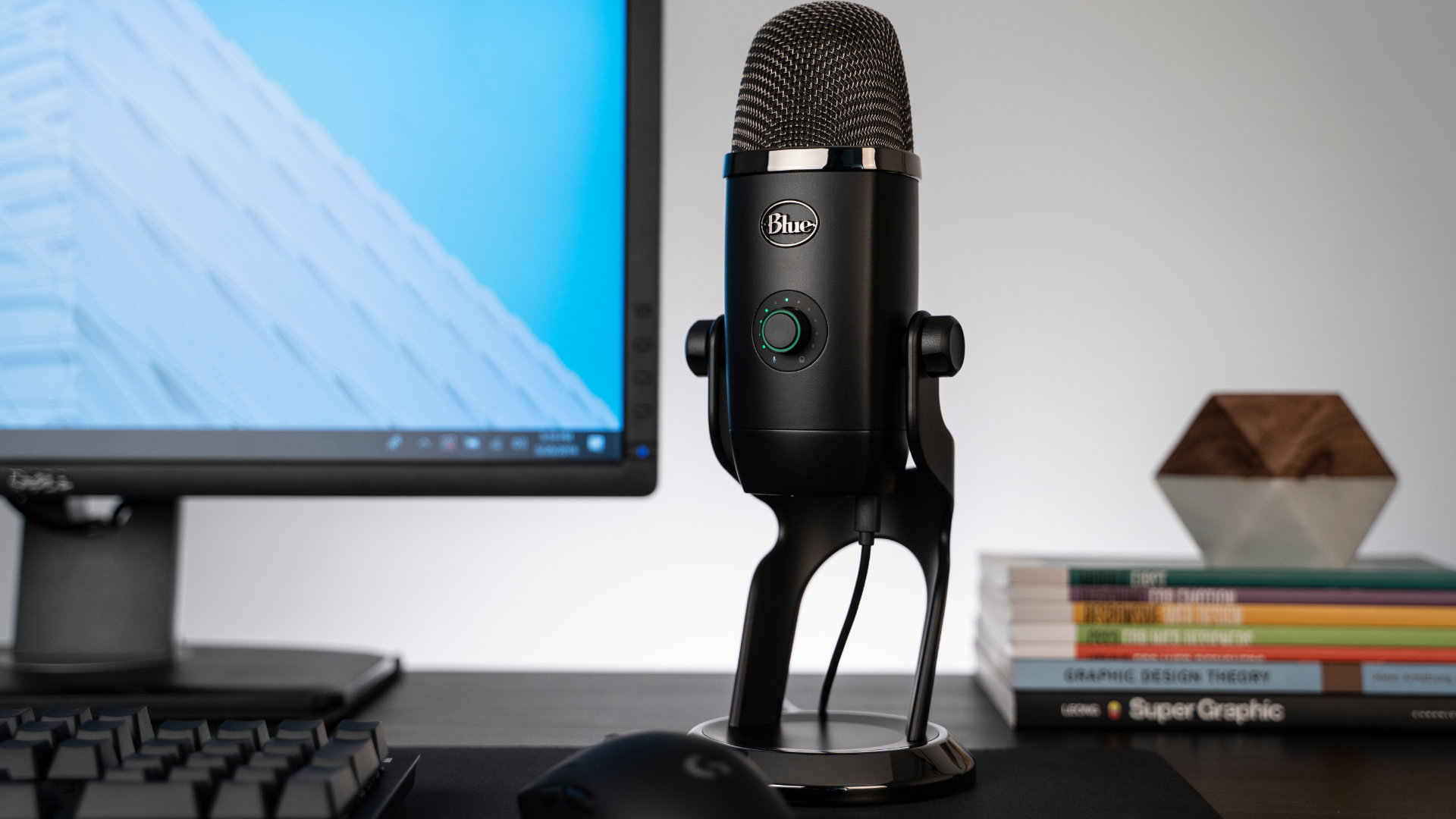
2. Blue Yeti X
The best gaming microphone for most.
Blue Yeti X specs:
| Sample Rate | 48kHz |
| Bit rate | 24-bit |
| Frequency response | 20Hz – 20kHz |
| Polar patterns | Cardioid, Bidirectional, Omnidirectional, Stereo |
| Connectivity | USB, 3.5mm jack |
Pros
- Superb audio
- Great software
- Multiple polar patterns
Cons
- Large footprint
- Not much new for existing owners
- Pricey
Anyone who’s remotely familiar with gaming microphones won’t be surprised to see Blue topping the list, given that the original Blue Yeti made the desktop microphone a staple streaming item. The Blue Yeti X only features improvements, too, combining the greatest elements of its predecessor with its smaller Nano model, resulting in the best gaming microphone on the market.
$169 (£160) is a bigger bite of your wallet than the original, but the sound quality is better than ever with an extra condenser mic capsule and a toggle for background noise reduction, getting rid of extra whispers and hums. Visually, it’s far sleeker than the dated cylindrical approach, making sure you look professional in your video calls. The LED volume meter cuts through the bright lights of your monitor when you want to make on-the-fly adjustments. Plus, there’s now a reasonably sturdy stand if you don’t want to mount it on an arm.
For that price, you might be considering an XLR setup instead, but the Blue Yeti X’s plug-and-play nature makes it an exceptional value for money and accessible to boot. You can also make use of the Blue Voice section of the Logitech G Hub software, which allows you to make adjustments and tinker with presets made by you or others.
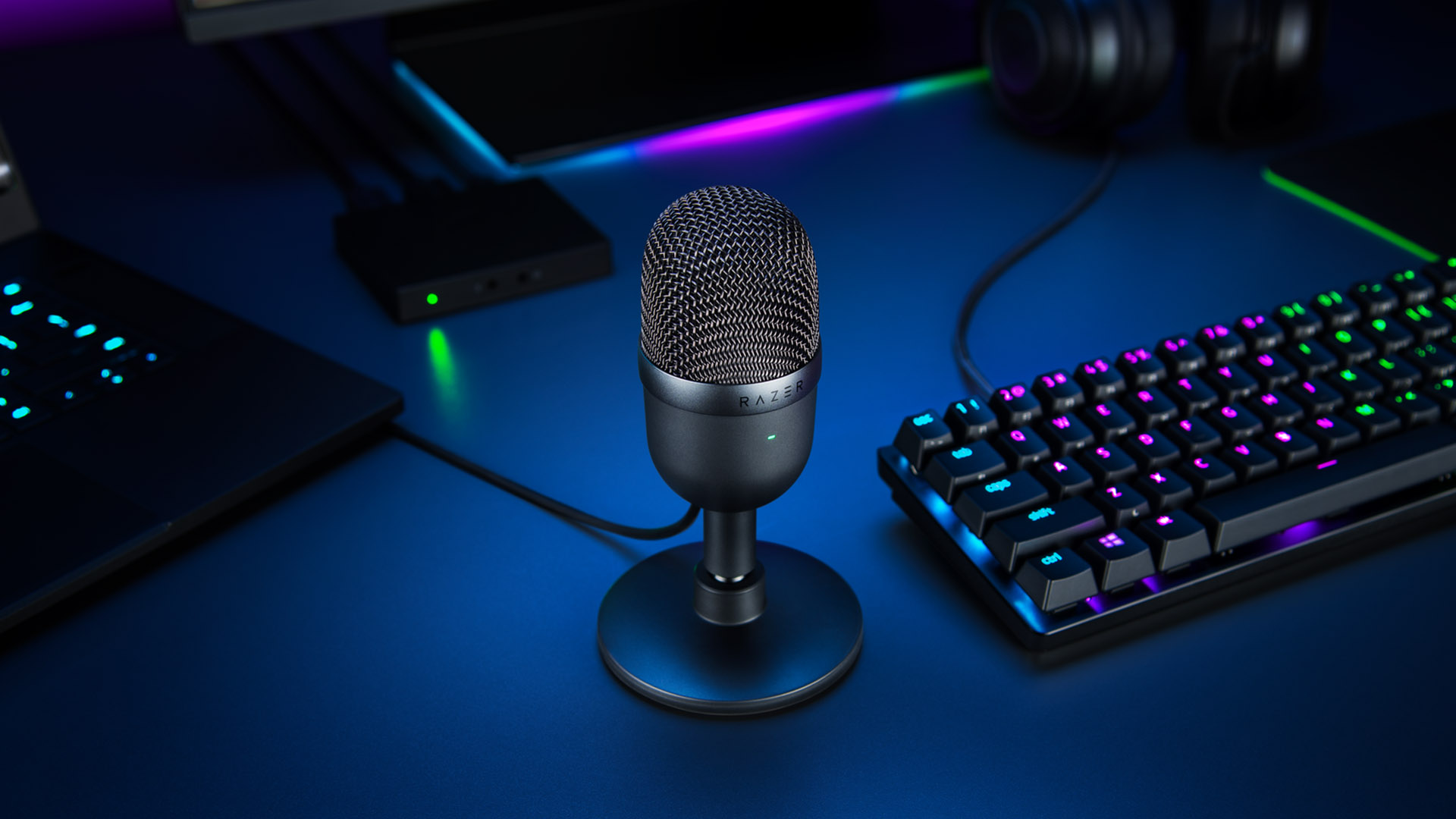
3. Razer Seiren Mini
The best budget USB gaming microphone.
Razer Seiren Mini specs:
| Sample Rate | 48kHz |
| Bit rate | 16-bit |
| Frequency response | 20Hz – 20kHz |
| Polar patterns | Cardioid |
| Connectivity | USB |
Pros
- Slick design
- Simple to use
- Great value
Cons
- Software is Windows-only
- Stand height & angle is odd
- Only one polar pattern
There are plenty of unbranded value options to choose from, but the Razer Seiren Mini offers the best bang for your buck. You’ve heard of the phrase ‘the best things come in small packages’, right?
The Razer Seiren Mini might be one of the most compact microphones we’ve ever seen, but it packs a lot of technology to ensure its sound quality rivals the Blue Snowball, and perhaps even the Blue Yeti. At $49.99 (£50), its price-to-performance ratio makes it the best budget gaming microphone around.
Its stand is good enough with a built-in shock mount, but it’s worth sticking the Razer Seiren Mini onto an arm and moving it closer to your mouth. This will allow you to keep it away from the loud clicks of the best gaming keyboard. You’ll need to adjust things like gain in the software, as there are no physical dials, so it can be a tad tricky to optimize the amount of background noise you pick up.

4. Audio-Technica AT2020
The best budget XLR gaming microphone.
Audio-Technica AT2020 specs:
| Sample Rate | 48kHz |
| Bit rate | 16-bit |
| Frequency response | 20Hz – 20kHz |
| Polar patterns | Cardioid |
| Connectivity | XLR |
Pros
- Very good value
- XLR-equipped
- Durable
Cons
- No shock mount
- Range is limited
- Single polar pattern
Audio-Technica is a professional audio brand that often sits up there with the likes of Rode, Shure, Sennheiser, and Beyerdynamic, but it’s also had the best entry-level XLR microphone for quite some time. Despite the 2004 release of the original, the Audio-Technica AT2020 is still the best budget XLR gaming microphone you can get your hands on.
The crystal clear audio only requires 48V of phantom power or more, meaning a relatively inexpensive Focusrite Scarlett Solo preamp will do the trick if you don’t want to spend the extra on the best XLR audio interface. It also doesn’t carry the same ‘gamer’ aesthetic as most of the entries on this list.
For the $99 (£79) price tag, you don’t get a stand, but like all gaming microphones, it would benefit from being attached to an arm on the best gaming desk, anyway.
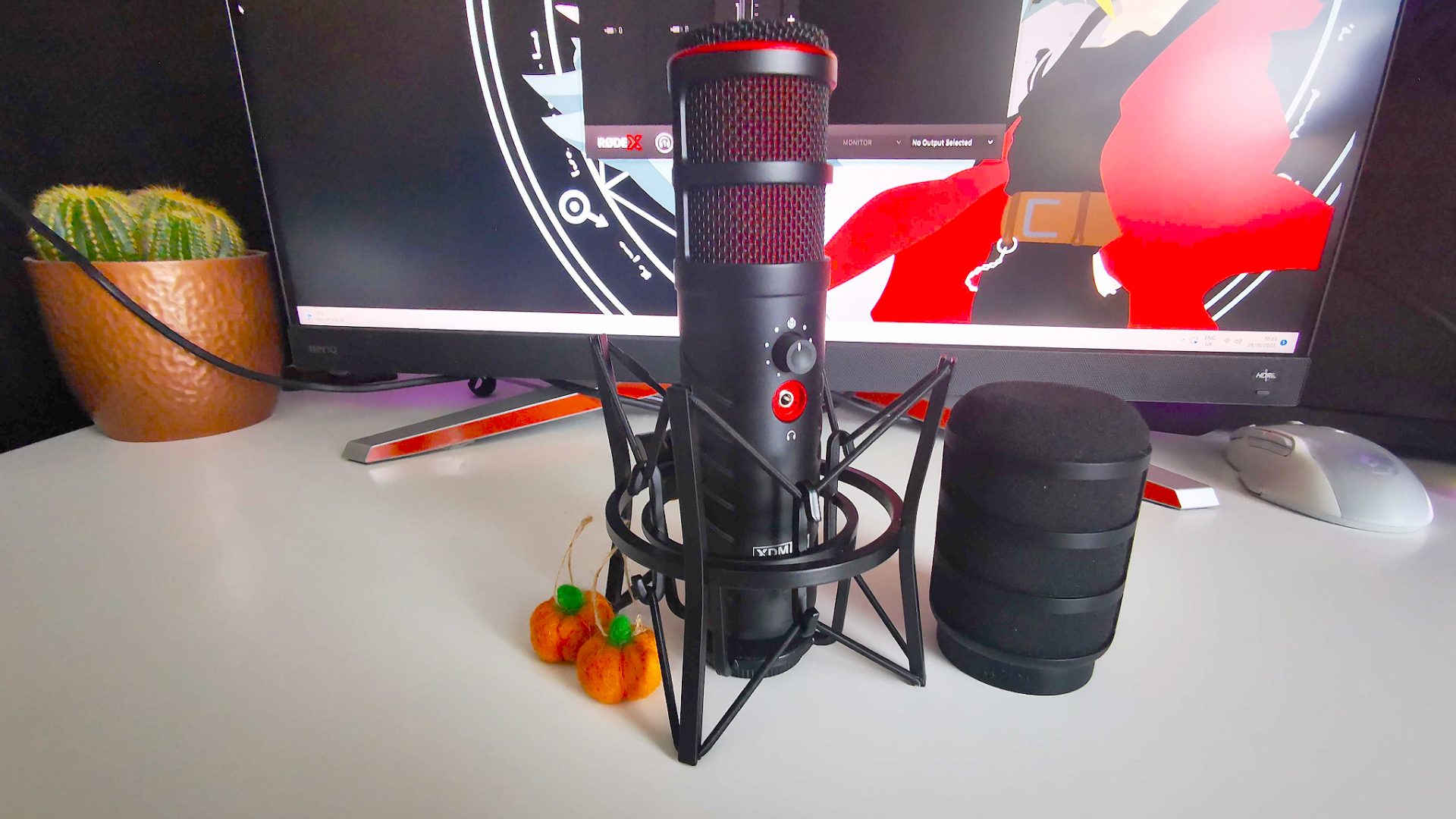
5. Rode X XDM-100
The best premium gaming mic.
Rode X XDM-100 specs:
| Sample Rate | 48kHz |
| Bit rate | 24-bit |
| Frequency response | 20Hz – 20kHz |
| Polar patterns | Cardioid |
| Connectivity | USB-C , 3.5mm jack |
Pros
- Excellent audio quality.
- Solid build quality.
- Virtual mixing software.
Cons
- Lofty price.
- Only one polar pattern.
The Rode X XDM-100 is a USB-C gaming mic that targets professional Twitch streamers with superb audio capabilities. It also holds up against even the best XLR setups, thanks to an included virtual mixing suite that emulates the Rodecaster Pro.
Boasting a dynamic capsule, USB-C connectivity, and a wide 20 Hz – 20 kHz frequency range, the Rode X XDM-100 houses high specs within its sleek metal shell. At the heart of the mic is the company’s Revolution Preamp — an internal amplifier that eliminates the need for additional processing and gain.
The XDM-100 arrives alongside Rode’s new Unify virtual mixer, and the software really helps this premium gaming mic shine. Its intuitive layout will no doubt appeal to seasoned streamers and content creators alike, while additional ‘aphex’ features will help you dial in your audio input.
Rode’s gaming mic commands a premium price tag, but if you’re looking for a USB-C device that’ll offer XLR levels of functionality, the XDM-100 won’t disappoint. Just keep in mind that while the package includes a nifty shock mount and a pop filter, we’d advise clamping it to your gaming desk with a decent boom arm.
Read our full Rode X XDM-100 review.

6. Rode NT-USB Mini
The best microphone for entry-level streamers.
Rode NT-USB Mini specs:
| Sample Rate | 48 / 96kHz |
| Bit rate | 24-bit |
| Frequency response | 70Hz – 20kHz |
| Polar patterns | Cardioid |
| Connectivity | USB-C |
Pros
- Compact design
- Great price
- Brilliant build quality
Cons
- Fixed polar pattern
- Background noise can be an issue
- Included stand is too small
It’s true that streamers with better audio grow faster than those without, but microphones don’t have to cost an arm and a leg. Similar to the Wave:3, Rode’s NT-USB Mini offers quality sound capture and the ability to split your desktop and stream audio within the Rode Connect software, all for under $100.
There are some sacrifices for the slimmer MSRP, as you’ll be limited to two playback channels and you’ll need to account for background noise if you want the cleanest mix. But unlike its more expensive rival, you can use up to four NT-USB Minis at once for a multi-microphone setup.
The best part is just how well it performs with its compact design, as Rode shrinks down its renowned full-sized Rode NT-USB into a smaller frame. You won’t find this one getting in the way of your webcam.
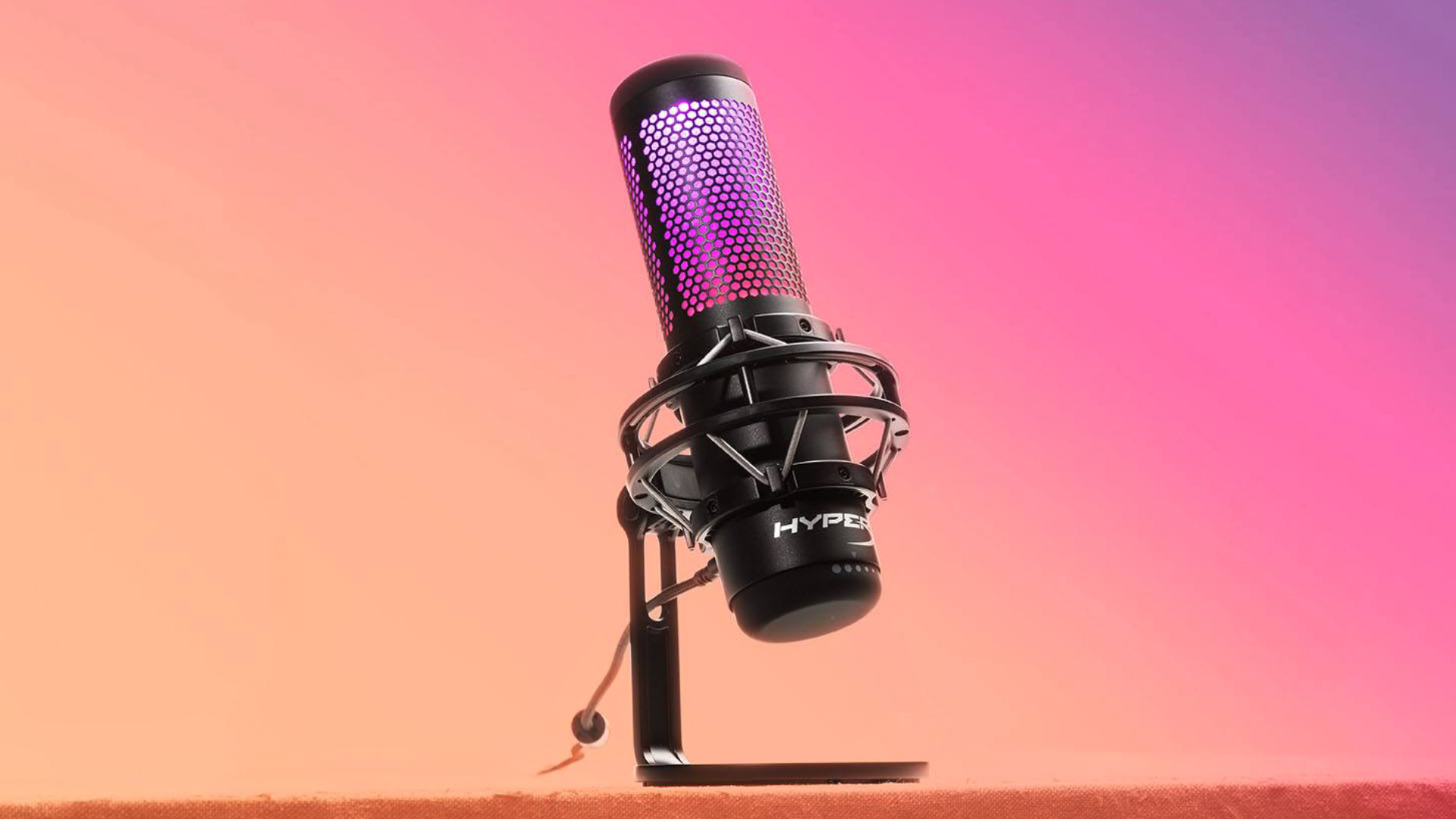
7. HyperX QuadCast S
The best microphone with RGB lighting.
HyperX QuadCast S specs:
| Sample Rate | 48 / 96kHz |
| Bit rate | 16-bit |
| Frequency response | 20Hz – 20kHz |
| Polar patterns | Cardioid, Bidirectional, Omnidirectional, Stereo |
| Connectivity | USB, 3.5mm |
Pros
- Full RGB lighting
- Built-in shock mount
- Four polar patterns
Cons
- Big and heavy
- Ngenuity software is unintuitive
- Expensive
Early on in your streaming career, you have the decision to make: do you want to be the center of attention or are you happy for your flashy equipment to sit in the spotlight? If your answer is the latter, then the HyperX QuadCast S might be more your bag, being one of the only gaming microphones to feature full RGB lighting.
Its closest rival is the Razer Seiren Emote, which offers eye-catching animations, but they are quite limited. The lighting within the HyperX QuadCast S takes up the entire head of the microphone, however, allowing you to add your own flare of personalization through color.
The quality of the HyperX QuadCast S is the same as the original red LED model, which is to say not as clear as the Blue Yeti X but still crisp. It also features the same built-in shock mount to dampen the sound when you accidentally (or purposefully, we’re not judging) bang against your desk, which feeds into its value given that shock mounts aren’t cheap. $159.99 (£159.99) is the asking price for the QuadCast S, but if you are willing to give up the RGB lighting, the original will set you back $139.99 (£119.99).
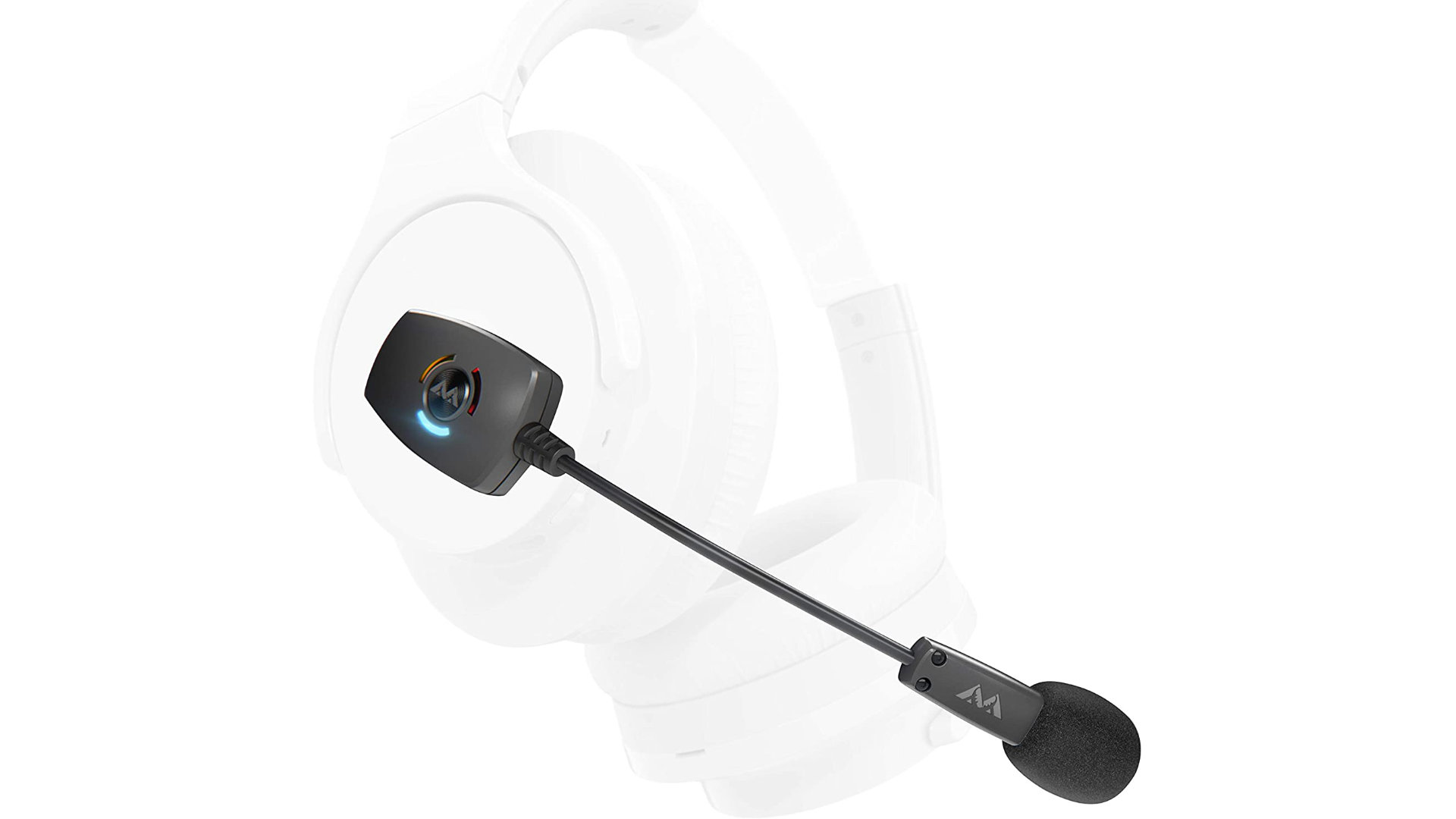
8. Antlion Modmic Wireless
The best wireless gaming microphone.
Antlion Modmic Wireless specs:
| Sample Rate | 48kHz |
| Bit rate | 16-bit |
| Frequency response | 50Hz – 20kHz |
| Polar patterns | Omnidirectional, Unidirectional |
| Connectivity | USB dongle or cable |
Pros
- Great sound quality
- Easy to set up
- Long battery life
Cons
- Wireless of questionable value if using wired headphones
- Mundane looks
- Costly
Not everyone wants a gaming microphone taking up valuable desk space or attached to an arm that hovers over you. This is where the Antlion Modmic Wireless comes in, sticking to the side of your headphones or headset, leaving you free to swing around on the best gaming chair without getting tangled – provided you’ve got a wireless gaming headset that is, otherwise, you’ll be yanked back by other wires.
Modmics often sound almost as good as their desktop counterparts, which is an impressive feat considering how compact they are in comparison. The Modmic Wireless is naturally the most portable of them all, and it doesn’t sacrifice quality thanks to Antlion’s use of aptX Low Latency technology to keep ping as little as 34ms and the range up to 32 feet (ten meters).
The biggest drawback is remembering to charge it, but it’s no trouble if you forget because you can use it wired while juicing it back up. Once it’s ready, just connect it to the USB dongle and check the LED status indicators to make sure you’re good to go. It’s even compatible with Windows, Mac, Linux, and even PlayStation 5, but you, unfortunately, won’t be able to get it working on Xbox consoles.

9. Razer Seiren V2 Pro
The best high-end gaming microphone.
Razer Seiren V2 Pro specs:
| Sample Rate | 96kHz |
| Bit rate | 24-bit |
| Frequency response | 20Hz – 20kHz |
| Polar patterns | Cardioid |
| Connectivity | USB |
Pros
- Clear, transparent signal
- Subtle, understated styling
- 96kHz, 24-bit audio
Cons
- No Pop filter
- Complex Stream Mixer software
- No boom arm
With a smart new form factor, the Seiren V2 Pro certainly looks the part. Dressed head-to-toe in matte black, it’s a sleek mic with front-mounted gain and volume dials sitting just below a mute button.
Connectivity comes via a proprietary USB-C cable shaped to fit the Seiren’s curved body and terminating in a standard USB-A connection. A good chunk of a USB mic’s appeal is that you can plug it in and get cracking straight away, with minimal fuss or tweaking of settings. Here, you’ll need to be prepared to put time into the Razer Synapse app to make the most of the V2 Pro.
There’s no boom arm included in the Seiren’s packaging, and you’d be advised to pick one up as the bundled desk stand sits too low to make good use of the mic’s limited range. You can turn up the gain, but you’ll likely incur some unwanted background noise.
This is a competent mic that does a solid job, provided you can overlook the omission of a boom arm and are open to tweaking the output via the Synapse app.
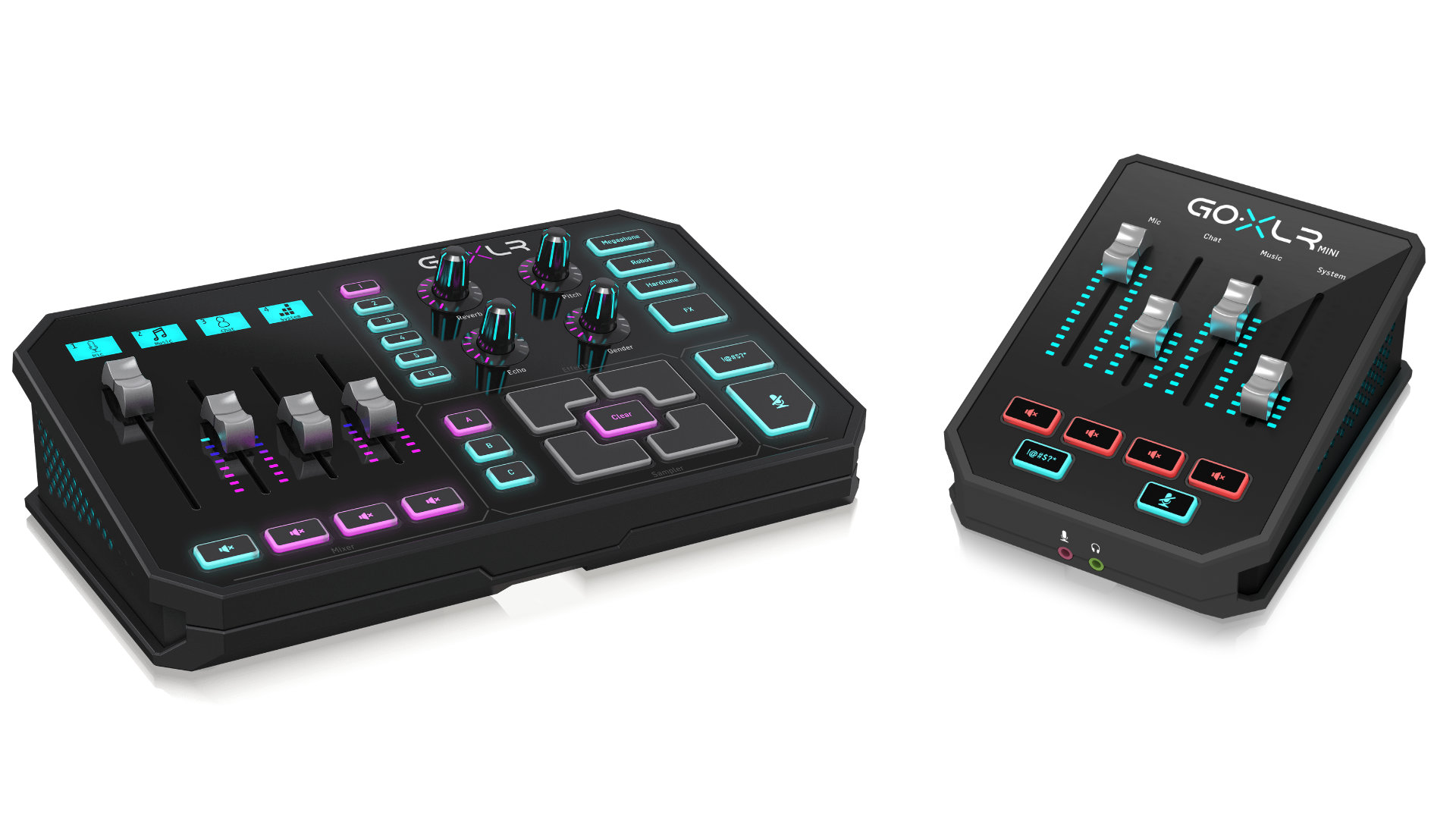
10. GoXLR Mini
The best XLR audio interface.
GoXLR Mini specs:
| Brand | TC-Helicon |
| Dimensions | 24.1 x 21.6 x 11.4 cm |
| Weight | 2.23 lbs (1.01 kg) |
| Operating systems | Windows 7, 8, 10, 11, no Mac support |
| Connectivity | USB-Type B |
Pros
- Superb sound quality
- Brilliant built-in pre-amp
- Streamer-specific audio interface
Cons
- Not cheap
- Functionality can be daunting
Using an XLR microphone requires a good audio interface for phantom power, and none offer more value for money than TC-Helicon’s GoXLR Mini. The device has a low-noise Midas preamp inside that pushes up to 72db of gain, giving it the ability to power even the most demanding microphones, like the Shure SM7B.
Admittedly, it’s only good for a single microphone setup with one XLR input and is a little too reliant on software to the point where it won’t work without it running in the background. But it’s intuitive enough to help newcomers set things up easily and customize RGB lighting, equalizers, compressors, and de-users to get rid of awkward hisses.
The four separate faders allow you to set different applications to separate channels, so you can adjust volumes on the best computer speakers independently of one another. We’ve been using the full-sized GoXLR for the better part of a year and couldn’t go back to a single channel without a fight, as it’s proven invaluable to crank Discord up or the system sound down when gameplay gets loud. All in all, it’s the GoXLR Mini that’s the star of the show with its value for money, provided you’re willing to give up the streamer-specific features, that is. It’s still a bit chunkier than an all-in-one system like the Cooler Master SteamEnjin for what it offers, but you can’t argue with the price.
How to choose the best gaming microphone
- Stand: Most gaming microphones only come with a desktop stand, while some don’t come with a stand at all. No matter which one you go for, however, you should consider getting a swivel arm to accompany your purchase, whether that’s a desk clamp or a standing model. This way, you can position the microphone further away from your noisy keyboard and closer to your mouth, allowing you to then turn down the gain and cut out as much unwanted background noise as possible.
- Microphone type: When it comes to choosing between dynamic or condenser microphones, however, we can draw a more definitive line. Condenser microphones are better for quieter environments like podcasts, streams, and meetings, while dynamic microphones are less sensitive and used to capture instruments and louder vocals. The Shure SM7B is the only dynamic microphone on this list and has grown in popularity because of its ability to cut out all the clicks of a mechanical keyboard without the help of noise gates, but the condenser microphones listed here offer better value for money when you factor in the help of software.
- Noise-cancellation: In fact, AI is being used in a variety of different ways to clean up live audio and remove unwanted background noise. RTX Voice uses this approach, granting anyone with a ray tracing-capable Nvidia graphics card the power to polish both incoming and outgoing audio via software. Asus meanwhile has taken the hardware route with a noise-cancelling mic adapter that broadly does the same thing for 3.5mm headsets.
Are XLR microphones better than USB?
Whether an XLR or USB microphone is better depends on how you intend to use it, your budget, and your preferences.
XLR microphones have been the standard for professional studios for many years and for good reason. In general terms, XLR microphones offer better sound quality than USB. This is because XLR mics use analog signals, can handle higher-quality audio data, and have lower latency than digital USB connections.
The main drawback of XLR mics is that they require additional equipment, such as audio interfaces and preamps, whereas USB mics are plug-and-play. This makes USB microphones popular for podcasting and online streaming, where portability and easy setup are king.
USB Mics tend to be cheaper, so they’re better suited to beginners or those on a tight budget, but XLR microphones are the audio gold standard and allow for room to upgrade your setup in the future. If you’re focused on audio quality above all else, an XLR microphone will likely suit your needs. As always, however, there are good and bad XLR and USB microphones, so pay attention to reviews and, if possible, audition potential candidates before committing.
